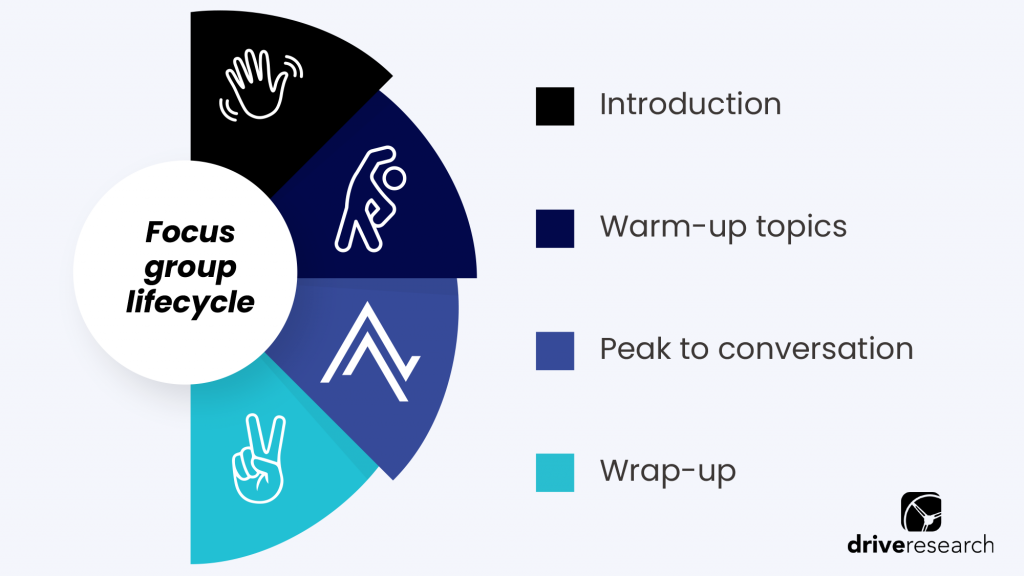
It’s important to be aware of group effect when performing market research.
This bias can negatively impact a person’s answers when taking part in qualitative research studies.
Keep reading to learn more about the group effect, including what it is and how to prevent it from occurring when conducting focus group studies for market research.
What is Group Effect?
Group effect is a type of bias that primarily affects focus groups. It is also referred to as group bias.
It can occur during a focus group discussion when participants are trying to come to similar conclusions.
Moreover, focus group participants will falsely agree with others to try to reach a singular answer the majority of the group agrees with.
Typically, group effect happens when one or several focus group participants are more vocal and other participants feel the need to voice similar opinions or feedback.
An easy way to for moderators to identify group effect is occurring is if a participant says, “I agree with Jane, she is right,” and does not explain any other reasoning for their agreement.
Example of Group Effect Bias
Let’s say a company is recruiting for market research. It consists of two focus groups of 12 participants each.
The main screening criteria and shared attributes of the groups are they have to be Kia owners.
The moderator starts the discussion by talking about participants’ satisfaction with their vehicles and the brand.
Several excited participants jump right in and glow about the gas mileage, sleek new models, and comfort. These brand promoters in the focus group talk at length about Kia over the first 10 to 15 minutes of the group discussion.
Although, one participant, in particular, is sitting quietly in the group. Let’s call him Jim.
Jim has had a poor experience with his Kia and has been to the service shop over 6 times in the past 3 months since he purchased the vehicle.
It has been one problem after another and when he purchased the Kia, he even had issues with financing and approval.
However, since the group discussion was steered in a positive direction and everyone in the group seemed to love their Kia vehicles, Jim was afraid and embarrassed to bring up his problems for fear of standing out and going against the group.
Therefore he quietly told the moderator, “My Kia is great, I agree with everyone else’s opinions.”
⚠️ This is group effect. ⚠️
As a result, the findings and the report are reflective of the majority who steered the findings in a specific direction and did not allow others to voice their counter-opinions properly.
Why Should Group Effect Be Avoided?
Market research companies hate bias. We try to avoid it at all costs.
That’s because the goal of a focus group is not to come to one singular conclusion.
Instead, moderators are searching for differences as well as similarities between participants. Moderators want to understand thoughts and opinions in-depth, but group effect bias inhibits this conversation.
It’s important to dig into the reasoning behind agreement and disagreement between participants during the focus group discussion.
This helps identify the opinions and feedback of a larger audience the end-client is conducting the focus group on behalf of.
If all participants agree with each other, differing thoughts and opinions will not be gathered which alters and skews the findings of the study.
Recommended Reading: 5 Helpful Tips for a Focus Group Moderator
How to Prevent Group Effect in Focus Groups
Our focus groups company finds that group bias can often be eliminated with a strong moderator.
It is their job to challenge participants, get everyone to speak, and make them feel comfortable with voicing differing opinions.
This is why before each focus group moderators often state there is no right or wrong answer. However, once the study starts, group biases can easily form.
To avoid the group effect, follow these tips:
Tip 1: Recruit participants with different personalities
During the recruiting process for focus groups, it is important to seek people who are comfortable sharing their thoughts and opinions in a group setting.
Use questions that require creative answers when recruiting participants, such as “What famous person would you like to have dinner with?”
Participants who can answer creatively and thrive under pressure are ideal candidates for focus group research studies.
Tip 2: Discuss the purpose of the focus group
As part of the focus group lifecycle, the moderator should begin the discussion by reminding participants of the purpose of the study.
Remind them it is important to tell the moderator if they agree or disagree with what is being discussed.
Encourage participants to give honest answers. Remind them there is no right or wrong answer.

Tip 3: Encourage all participants to share their thoughts
Notice when group effect is occurring and reach out to less vocal participants to understand the reasoning for agreement or disagreement.
Also, if one or a few participants are particularly vocal, the moderator may want to remind these participants the goal of the focus group is to hear from everyone equally and then turn the discussion to less vocal participants.
Tip 4: Host more than one study
Hosting more than one group study is key to gathering valuable market research. Do not put all of your eggs in one basket. Conduct a minimum of two focus groups for each project.
Tip 5: Account for group biases
When analyzing the results of a group research study, account for the group effect. Make sure those doing the analysis do not have a personal or professional attachment to the product.
Remaining objective is crucial.
Final Thoughts
Group effect often occurs during face-to-face group discussions in market research.
In an attempt to uphold a consensus, participants agree with each other’s opinions instead of providing their own truthful responses.
This often leads to exaggerated responses and results that do not accurately reflect the true opinions of all participants.
It is important to always account for group effect or group bias and look for ways to prevent it. The more accurate feedback you collect, the better you will be at data-driven decision-making.
A qualified moderator will work to reduce group bias by encouraging all participants to speak openly and honestly about their opinions.
Contact Our Market Research Company
Drive Research is a national market research company. We specialize in qualitative and quantitative market research studies including qualitative recruiting, focus groups, and moderating services.
To get a quote for a custom market research project, contact Drive Research today.



